Understanding Whiteflies: Biology, Impact and Control
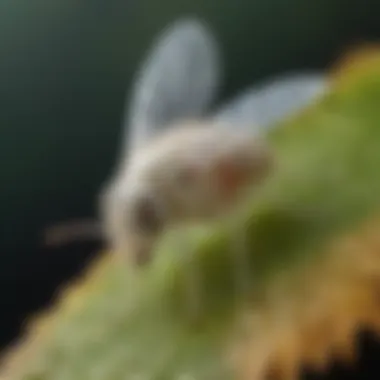

Article Overview
Purpose of the Article
This article aims to elucidate the complex nature of whiteflies. It covers important aspects of their biology, their role as agricultural pests, and the methods available for their management. Understanding whiteflies is crucial for various stakeholders, including researchers, farmers, and policymakers. The article intends to serve as a comprehensive guide, promoting informed decisions to alleviate the threats posed by these pests.
Relevance to Multiple Disciplines
Whiteflies intersect multiple fields, including entomology, agriculture, and ecology. Their impact spans economic, environmental, and health domains. Consequently, knowledge about their behavior is valuable not just for agricultural scientists but also for environmentalists and public health professionals. Effective management of whiteflies can result in improved crop yields, reduced pesticide use, and a healthier ecosystem.
Research Background
Historical Context
Historically, whiteflies have been recognized as significant pests since the early 20th century. They first gained attention due to their relationship with plant health, particularly in the agricultural sectors of North America. Over time, research has evolved from simple identification to an in-depth analysis of their life cycles and ecological interactions. Such historical insights help frame current management practices.
Key Concepts and Definitions
Understanding whiteflies requires familiarity with several key terms:
- Life Cycle: Whiteflies undergo a complex life cycle that includes egg, nymph, pupa, and adult stages.
- Host Plants: These are the plants that whiteflies parasitize, extracting sap and potentially transmitting plant viruses.
- Integrated Pest Management (IPM): A comprehensive approach combining biological, cultural, and chemical practices to control pest populations sustainably.
"A comprehensive understanding of the whitefly's biology and impact is essential for effective management strategies that support agricultural sustainability."
"A comprehensive understanding of the whitefly's biology and impact is essential for effective management strategies that support agricultural sustainability."
Recognizing these concepts facilitates a better grasp of the article's subsequent sections, which will dive into the life cycle of whiteflies, their economic implications, and the modern strategies available for controlling their population.
Preface to Whiteflies
Whiteflies hold a significant role in agriculture and ecology, making them a crucial subject for study. Their capacity to reproduce rapidly and their preference for a variety of host plants contribute to their status as pests. Understanding whiteflies offers insight into managing their populations and mitigating their effects on crops. This section lays the foundation for comprehending their biology, impact, and control.
Definition and Classification
Whiteflies belong to the family Aleyrodidae, which is part of the order Hemiptera. They are small, winged insects with a characteristic white, powdery appearance due to the wax they excrete. While there are over 1,500 species known worldwide, a few prominent ones affect agricultural systems significantly. The most common among them are the Bemisia tabaci and Trialeurodes vaporariorum.
These insects are classified into several genera. Each genus exhibits unique traits but generally shares common biological and ecological characteristics. Accurate identification is key for effective management since different species may have varying levels of resistance to control measures.
Historical Context
The presence of whiteflies has been recorded for centuries, but it was not until the late 19th and early 20th centuries that their economic impact came to prominence. As global trade and agriculture expanded, so did the distribution of whiteflies and their associated problems.
Their introduction into non-native environments led to the population explosions that farmers often experience today. For example, the emergence of the sweet potato whitefly in the Caribbean caused detrimental effects on local crops. Understanding this historical context helps in grasping the modern challenges posed by these pests in today's agricultural practices.
"The understanding of historical patterns in whitefly outbreaks provides crucial insights into contemporary pest management strategies."
"The understanding of historical patterns in whitefly outbreaks provides crucial insights into contemporary pest management strategies."
In summary, the introduction to whiteflies provides essential knowledge about their classification and historical significance. This forms a critical aspect of the broader discussion surrounding their biology, ecological impact, and management within agricultural settings.
Biology of Whiteflies
The study of the biology of whiteflies is crucial for understanding their behavior, life cycle, and the overall impact they have on agricultural systems. Whiteflies are not just simple pests; their biology plays a significant role in their interaction with crops and ecosystems. Knowing how they develop, feed, and reproduce helps in creating effective management strategies. This section elaborates on their morphological characteristics, life cycle stages, and feeding mechanisms, all of which form the foundation for managing their populations.
Morphological Characteristics
Whiteflies exhibit distinct morphological traits that help in their identification. Typically, adult whiteflies are small, about 1 to 2 millimeters in size, with a striking white, powdery appearance created by a waxy coating on their bodies. This coating acts as a protective barrier against predators and environmental stress.
A notable characteristic is the arrangement of their wings. Adult whiteflies hold their wings in a triangular position above their bodies, resembling a tiny moth. Their mouthparts are specially adapted for piercing plant tissues, utilizing a needle-like structure to extract sap from leaves.
These features contribute to their effectiveness as pests, allowing them to evade some control methods and thrive in various environments.
Life Cycle Stages
The life cycle of whiteflies consists of four main stages: egg, nymph, pupa, and adult. Understanding each stage is essential for effective management practices.
Egg Stage
The egg stage is critical in the life cycle of whiteflies. Female whiteflies lay their eggs on the undersides of leaves, with each female depositing around 100 to 400 eggs during her lifetime. The eggs are tiny and oval-shaped, with a smooth surface.
The position of these eggs is advantageous; being hidden from predators and environmental conditions increases their chances of survival. Moreover, the egg stage lasts approximately 4 to 12 days, depending on environmental factors like temperature. This relatively quick transition into the nymph stage allows populations to grow rapidly, which can pose significant risks to crops if not managed.
Nymph Stage
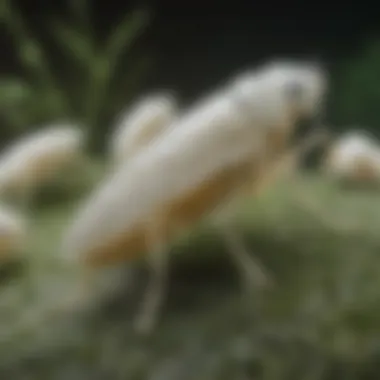
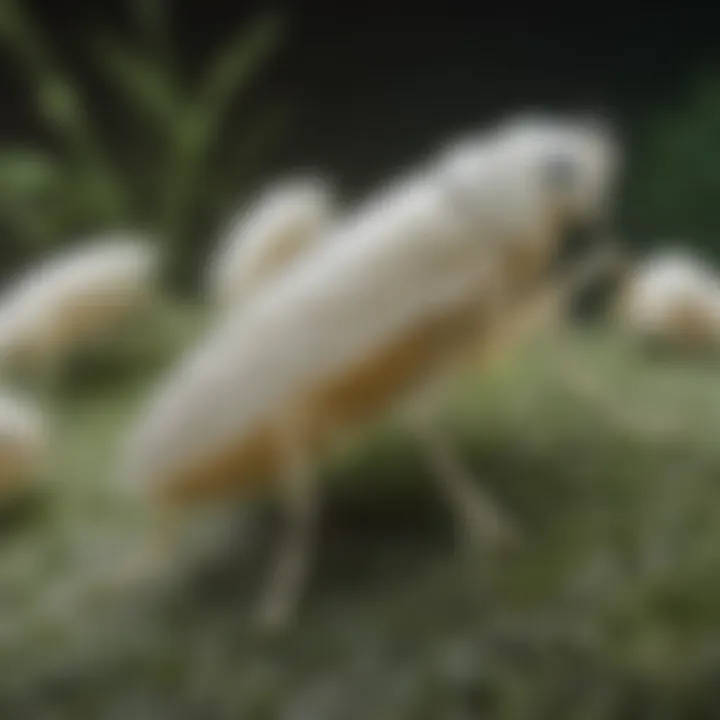
The nymph stage follows the egg stage after hatching, where they undergo several molts as they develop. This stage lasts for about 2 to 3 weeks. Nymphs are sessile, meaning they do not move from their original location on the plant. They maintain a close association with their feeding sites by sucking sap from the plants, weakening them over time.
One key characteristic of nymphs is their ability to produce honeydew, a sticky excretion that can cause sooty mold growth on plants, influencing overall plant health and market value. Because of their immobility during this phase, it becomes essential to target control methods that can address these populations directly in their preferred feeding locations.
Adult Stage
Upon completing development, nymphs metamorphose into adults. In adult form, whiteflies often exhibit greater mobility, enabling them to spread to new plants and hosts quickly. The adult stage is characterized by rapid reproduction, with females beginning to lay eggs approximately 5 to 7 days after emerging. This fast reproductive rate makes managing whitefly populations even more challenging.
The adult stage not only continues to feed on plants but is also a vector for various plant viruses. Their ability to transmit diseases emphasizes the importance of understanding their biology, as it highlights potential threats to crop health. Also, the distinct flying pattern of adults can complicate control tactics, as chemical applications may not always effectively reach them.
Feeding Mechanisms
Whiteflies use specialized mouthparts to penetrate plant tissues and siphon sap, which serves as their primary nutrient source. This feeding method can cause damage to plants and induce stress responses, which can be detrimental to crop yields. As whiteflies extract sap, they often inject saliva containing harmful compounds that can cause further injury to plant tissues.
Importantly, the feeding activities of whiteflies can lead to significant economic losses due to decreased plant vitality, lower fruit quality, and plants' susceptibility to diseases transmitted by the insects. Understanding these mechanisms then serves as a basis for developing management strategies that either target their feeding habits or reduce the impact of their infestations on agricultural systems.
Whiteflies in Ecosystems
Whiteflies play a pivotal role in ecosystems, despite their reputation as detrimental agricultural pests. Understanding their ecological functions provides insight into broader ecological dynamics. This section highlights their contributions, both beneficial and harmful, in maintaining ecosystem balance.
Ecological Role
Whiteflies serve multiple functions within their natural habitats. Primarily, they are herbivores, feeding on the phloem of host plants. This feeding behavior can affect the health and vigor of plants. However, it also positions whiteflies as a food source for various predators, including lady beetles and lacewings.
- Nutrient Cycling: Their feeding activities contribute to nutrient cycling in the soil. As they excrete honeydew, they facilitate microbial activity, which enriches soil composition. This honeydew can promote the growth of sooty mold, which can cover leaves and hinder photosynthesis.
- Food Web Dynamics: As both prey and pest, whiteflies contribute to food web dynamics. They impact the abundance of other organisms by being a food source for various predators and parasitoids. The presence of whiteflies can even regulate the populations of these natural enemies.
- Pollination: Some whitefly species may indirectly assist in pollination processes, although this is not their primary role. Their movement among flowers can carry pollen, thus facilitating plant reproduction activities.
"Whiteflies embody complex interactions in ecosystems, influencing both plant health and the overall food web."
"Whiteflies embody complex interactions in ecosystems, influencing both plant health and the overall food web."
Host Plant Interactions
Whiteflies are known for their intricate relationships with host plants. These interactions are nuanced, affecting both plant and pest.
- Feeding Strategies: Whiteflies typically target soft, succulent plant tissues, which are high in sap. This specific preference allows them to thrive where other pests might struggle. Often, these include crops such as tomato, cabbage, and squash.
- Plant Responses: In response to whitefly feeding, plants can exhibit physiological changes. Some plants express defensive chemicals that deter further feeding. Others may develop thicker cuticles or lower nutrient availability to combat infestations.
- Impact on Crop Quality: Host plant interactions can lead to reduction in crop quality and yield. Infestations can result in symptoms like leaf curling, yellowing, and stunted growth. Over time, these effects can accumulate, leading to significant agricultural loss.
Overall, whiteflies embody complex interactions within ecosystems. Their ecological role and interactions with host plants highlight the importance of integrated pest management strategies, aiming to maintain balance while minimizing agricultural impacts.
Economic Impact of Whiteflies
The economic implications of whitefly infestations are profound, affecting agricultural productivity and financial stability in numerous sectors. Their presence not only reduces yield but also compromises product quality, leading to a cascade of economic consequences. Understanding these impacts is vital for farmers, economists, and policy-makers, as it informs pest management strategies and investment in crop protection.
Agricultural Damage
Crop Yields
Crop yields often suffer significantly due to whitefly infestations. Whiteflies feed on plant sap, weakening plants and causing stunted growth. This results in lower yields, which is detrimental to farmers' finances and food security in the region. Many crops, including tomatoes and cotton, are particularly vulnerable. The reduction in yield varies depending on the crop and the severity of the infestation. Ensuring high crop yields is essential for sustaining income and meeting market demands. Thus, addressing this issue through effective management is crucial.
Quality Reduction
Quality reduction is another critical aspect linked to whitefly damage. When plants are infested, the quality of produce decreases due to the formation of sooty mold and the transmission of diseases. Fruits and vegetables may not only lose their visual appeal but can also suffer from compromised taste or nutrition. This detrimental effect on quality can hinder marketability and diminish profits for farmers. In high-value crops, such as grapes or peppers, maintaining quality is especially important as consumers often demand high standards.
Economic Costs
Pest Control Expenditure
Pest control expenditure represents a significant portion of the economic burden faced by farmers dealing with whiteflies. This includes the costs associated with purchasing insecticides and implementing control measures. Farmers must invest regularly in pest management to prevent infestations. The ongoing nature of this expense can strain resources, especially for small-scale farmers. Effective pest management strategies, including integrated pest management, can help mitigate some of these costs in the long run, but initial investments can be substantial.
Market Implications
Market implications of whitefly infestations can alter supply chains and pricing structures. As damaged crops lead to lower supply, prices may increase, affecting consumers and overall market stability. Additionally, farmers may struggle with fluctuating market demands if their produce does not meet quality standards. The ripple effect on the agricultural sector can lead to broader economic challenges, further underscoring the importance of effective whitefly management strategies.
"Understanding the economic impact of whiteflies is crucial for developing effective pest management strategies that ensure agricultural stability."
"Understanding the economic impact of whiteflies is crucial for developing effective pest management strategies that ensure agricultural stability."
By comprehensively analyzing the economic impact of whiteflies, stakeholders can make informed decisions that enhance agricultural productivity and minimize financial losses. It is essential to continuously monitor pest populations and take proactive measures to safeguard crops.
Whitefly Species Identification
The identification of whitefly species is essential for effective pest management strategies. Since different species exhibit varying levels of virulence and attack different host plants, pinpointing the exact species can profoundly influence control measures. Accurate identification helps researchers and practitioners tailor their approaches, thus maximizing efficiency and minimizing crop damage. Furthermore, recognizing the species involved allows for better understanding of their ecological impacts and interactions with the surrounding environment. This makes whitefly species identification a fundamental element in both agricultural science and pest management.
Common Species Overview
Numerous whitefly species exist, but a few dominate agricultural settings. The Bemisia tabaci, often referred to as the sweet potato whitefly, is one of the most notorious. It inflicts damage on a variety of crops, including vegetables and ornamentals, and is notorious for its ability to develop resistance to many chemical control agents. Another significant species is the Trialeurodes vaporariorum, or the greenhouse whitefly, which primarily affects greenhouse crops. Each species has unique life cycle characteristics and host preferences that impact their management.
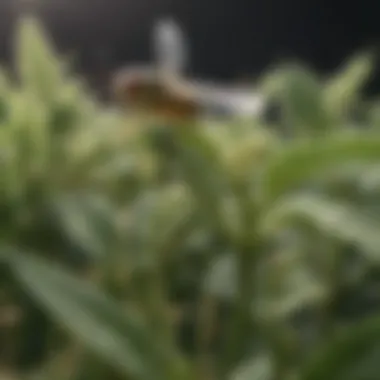
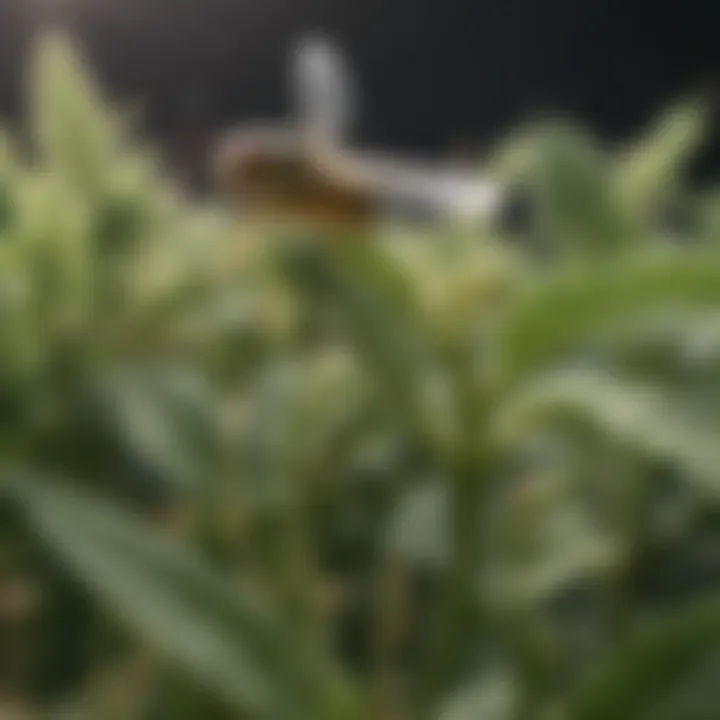
Key Whitefly Species:
- Bemisia tabaci (Sweet Potato Whitefly)
- Trialeurodes vaporariorum (Greenhouse Whitefly)
- Aleurodicus dugesii (Mexican Whitefly)
- Dialeurodes citri (Citrus Whitefly)
Recognizing these common species can facilitate faster and more effective intervention measures. Knowledge of species helps in anticipating potential infestations and implementing preventive actions before crop loss becomes significant.
Identification Techniques
Identifying whitefly species can be conducted using several techniques. Morphological examination is commonly applied. For example, looking at the wing patterns, body shape, and color can provide visible clues distinguishing species. Another prevalent method involves molecular techniques like PCR (Polymerase Chain Reaction). This method can identify species based on specific genetic markers.
Effective Techniques for Identification:
- Morphological Analysis: Examine external features under a microscope.
- Molecular Methods: Use DNA sequencing for precise identification.
- Ecological Monitoring: Track the behavior and host plant preference.
- Field Surveys: Regular inspections can provide real-time data on whitefly presence.
Accurate species identification can greatly contribute to the development of targeted management techniques, reducing costs and increasing the effectiveness of pest control strategies.
The significance of proper whitefly identification cannot be overstated; it dictates the success of management practices.
The significance of proper whitefly identification cannot be overstated; it dictates the success of management practices.
Management Strategies for Whiteflies
Effective management strategies for whiteflies are crucial in sustaining healthy crops. Whiteflies, as pests, can cause significant damage, leading to decreased yields and increased costs for growers. Addressing this issue requires an integrated approach that combines multiple techniques, enhancing the effectiveness of pest control while minimizing negative impacts on the environment and non-target organisms.
Cultural Practices
Cultural practices refer to agricultural methods that limit whitefly populations and minimize damage. These practices are essential because they provide a preventative framework instead of a reactive one.
One important cultural practice includes crop rotation. By rotating crops, farmers can disrupt the lifecycle of whiteflies, reducing their numbers over time. Selecting resistant plant varieties is another practice. These plants are specifically bred to withstand or reduce infestation, which decreases reliance on other control methods.
Furthermore, managing irrigation can be a factor in controlling whiteflies. Overhead irrigation can create favorable humidity conditions for whiteflies, so adjustments that promote lower humidity levels may help. Regular monitoring for whitefly populations also allows farmers to identify issues early, enabling timely interventions.
Chemical Control
Chemical control remains a vital tool against whitefly infestations. Among the varieties of chemical control, insecticides are commonly employed.
Insecticides
Insecticides provide immediate action, killing harmful whiteflies on contact or through ingestion. This characteristic makes them a popular choice in managing outbreaks. The effectiveness of insecticides is often due to their targeted approach, focusing on specific life stages of the whitefly.
The unique feature of insecticides is their ability to be systemic or contact-based. Systemic insecticides are absorbed by the plants and affect whiteflies when they feed on the foliage. However, they can have environmental impacts, affecting beneficial insects. Relying solely on insecticides can also lead to resistance in whitefly populations, necessitating careful rotation of different classes of these chemicals to manage resistance.
Plant Polices
Plant polices refer to strategies that involve using plant extracts and derivatives as a means of pest management. These natural solutions can provide a beneficial alternative to conventional insecticides. The key characteristic is their lower toxicity levels to non-target organisms and humans, making them an attractive choice for some growers.
Plant polices often contain compounds that repel or inhibit whitefly feeding. Unique features include the ability to enhance plant vigor naturally, making crops less palatable to pests. However, while using plant extracts is beneficial, their efficacy can vary greatly depending on the concentration and timing of application. More research is necessary to better understand these dynamics.
Biological Control Measures
Biological control measures rely on natural predators or other biological agents to manage whitefly populations. This approach can be highly effective and environmentally friendly.
Naturally Occurring Predators
Naturally occurring predators, such as certain ladybugs and lacewings, feed on whiteflies at various life stages. Integrating these predators into agricultural practices can reduce whitefly numbers. One of the main reasons for their popularity is their role in maintaining ecosystem balance.
The unique feature of these predators is their ability to adapt to various environments, making them suitable for diverse agricultural systems. However, relying solely on predators can sometimes be ineffective if whitefly populations are high. Thus, they work best when combined with other management strategies.
Parasitic Wasp Applications
Parasitic wasps, particularly those in the Encarsia genus, can effectively manage whitefly populations by laying eggs inside the whitefly nymphs. The wasp larvae then develop at the expense of the whitefly host, ultimately leading to its death. This method is compelling as it targets the pest without chemical input.
The key characteristic of parasitic wasps is their host specificity, which minimizes impacts on non-target species. However, the challenge lies in ensuring the wasps are introduced at the right time during the life cycle of whiteflies to maximize effectiveness. Successful implementation often requires a deeper understanding of both the host and the pest’s dynamics.
"An integrated pest management approach combines multiple strategies for sustainable whitefly control."
"An integrated pest management approach combines multiple strategies for sustainable whitefly control."
Through these management strategies, including cultural practices, chemical control, and biological measures, the severity of whitefly infestations can be significantly reduced, ensuring healthier crops and more sustainable agricultural practices.
Integrated Pest Management
Integrated Pest Management (IPM) is a crucial approach in addressing the challenges posed by whiteflies. This method incorporates various strategies that allow for sustainable pest control while minimizing environmental impacts. IPM is not merely about eliminating whiteflies but understanding their behavior and interactions, which informs more effective management practices. The importance of IPM in combating whitefly infestations lies in its capacity to balance economic viability, ecological health, and food safety.
Concept Overview
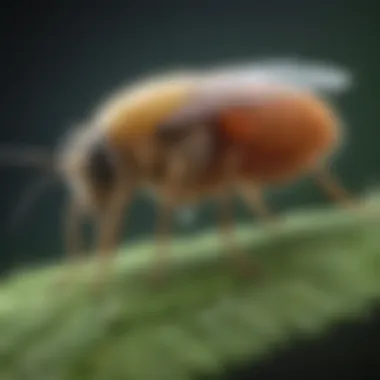
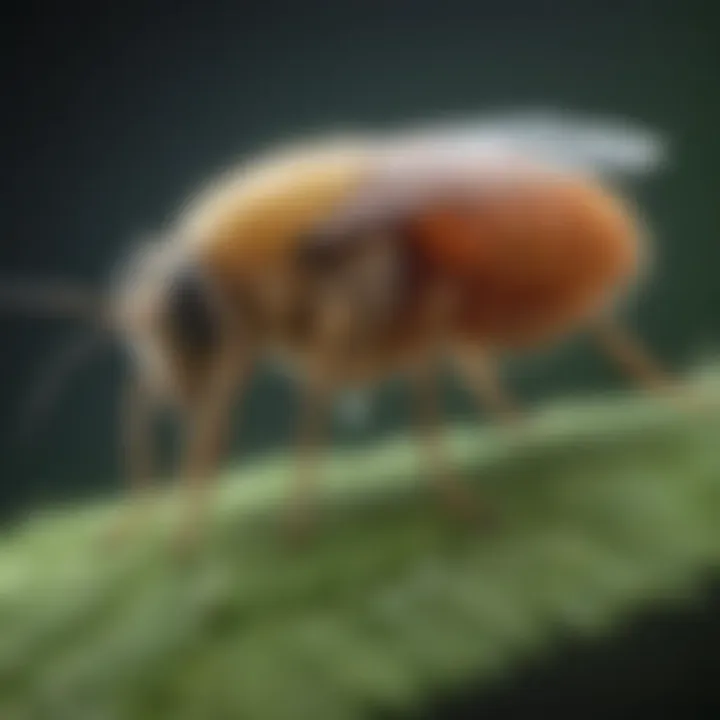
The concept of Integrated Pest Management involves a systematic process designed to manage pests with a comprehensive understanding of their biology and ecology. IPM encourages the use of multiple tactics, which may include cultural, biological, and chemical controls, rather than depending solely on insecticides. This multifaceted approach is designed to interrupt the life cycle of whiteflies, thus reducing their population in a cost-effective manner. By using IPM, growers can decrease dependency on chemical treatments, which is both economical and environmentally responsible.
Components of IPM
Effective IPM consists of several key components that work together harmoniously to manage whitefly populations. These components include monitoring and assessment, decision-making, and control tactics that rely on the most effective practices available.
Monitoring and Assessment
Monitoring and assessment are foundational elements of effective IPM programs. They involve the regular evaluation of pest populations and crop conditions. The benefit of continuous monitoring lies in its ability to provide timely data, which can indicate when whitefly populations reach critical levels. This enables farmers to act swiftly before infestations cause significant damage. Moreover, monitoring can track the effectiveness of implemented strategies.
The key characteristic of monitoring is its comprehensive nature; data can be gathered through visual inspections, traps, or digital sensors. A unique feature of this approach is that it allows for proactive rather than reactive management. By identifying problems early on, the need for drastic chemical controls can be minimized.
However, a potential disadvantage is the labor-intensive nature of monitoring, which may not be feasible for all agricultural setups. Despite this, the long-term benefits of this vigilance in quality control far outweigh the initial investment in time and resources.
Decision Making
Decision making is the sequence of actions based on monitoring data and assessment results. It forms the basis for determining whether control measures are necessary and which methods should be employed. Effective decision making within IPM prioritizes environmentally friendly options whenever possible.
The key characteristic of decision making in IPM is its reliance on data-driven outcomes that ensure managers know the correct timing and methods for control. A unique feature of sound decision-making is its adaptability; strategies can shift based on updated data regarding whitefly populations and resistance patterns. This adaptability can significantly enhance the success rates of management efforts.
On the flip side, a challenge is that decision-making can seem complicated, especially for newcomers to pest management. Resources and training may be required to fully understand the decision-making processes involved in IPM, but the investment leads to better long-term outcomes.
"Integrated Pest Management encapsulates a holistic view of pest control, prioritizing sustainability and ecological balance over simple extermination methods."
"Integrated Pest Management encapsulates a holistic view of pest control, prioritizing sustainability and ecological balance over simple extermination methods."
In summary, the integrated pest management approach furnishes a robust framework for the control of whiteflies, focusing on sustainable practices that align with ecological principles. It brings together monitoring, assessment, and informed decision-making to create strategies that can adapt to changing pest dynamics effectively.
Recent Research Trends
Recent research trends in whitefly studies have become increasingly significant due to the escalating impact these pests have on agriculture. This section focuses on emerging insights in genetic studies and resistance mechanisms, both of which are crucial for advancing our understanding of whiteflies and improving management strategies.
Genetic Studies
Genetic studies on whiteflies have revealed critical information about their biology and adaptation strategies. Researchers have sequenced genomes of various whitefly species, contributing to a deeper understanding of their evolution and the traits that enable them to thrive as pests. Genomic analysis has allowed scientists to identify specific genes linked to resistance against environmental stressors, including pesticides.
Moreover, genetic information is vital for tracking whitefly populations and understanding their dispersal patterns. For instance, studies using molecular markers have shown how whiteflies adapt to agricultural practices and varying climates. These findings are essential for developing targeted pest management strategies.
In particular, the focus on genetic diversity among whitefly populations helps inform decisions about which control measures may be most effective. This research not only aids in understanding whitefly biology but also has practical applications in agricultural settings.
Resistance Mechanisms
Understanding the resistance mechanisms of whiteflies plays a crucial role in combating their infestations. Whitefly populations often develop resistance to widely used insecticides, making management significantly more challenging. Recent studies have explored various mechanisms that confer this resistance.
Key mechanisms include:
- Metabolic Resistance: Whiteflies may increase the production of enzymes that detoxify insecticides, rendering those chemicals ineffective.
- Target Site Resistance: Changes in the binding sites where insecticides act can render them less effective.
- Behavioral Resistance: Some whiteflies exhibit altered behaviors, such as avoidance of treated plants, by recognizing chemical cues associated with pesticide presence.
The ongoing research in this area is critical. Through comprehensive studies, scientists aim to understand the genetic basis of resistance in whiteflies. This knowledge will be paramount for developing new insecticides and alternative control strategies that circumvent existing resistance issues.
"The fight against agricultural pests relies heavily on understanding their genetic and resistance pathways."
"The fight against agricultural pests relies heavily on understanding their genetic and resistance pathways."
Such focused research enhances the efficacy of Integrated Pest Management strategies by allowing for informed decisions on the best control methods to employ. As we learn more about the genetics and biology of whiteflies, it becomes possible to predict and preemptively address resistance phenomena, ultimately minimizing the economic and ecological impacts these pests impose.
Culmination
The conclusion section of this article synthesizes the critical insights gained from the exploration of whiteflies, their biology, economic impact, and management strategies. Understanding whiteflies serves several important purposes particularly for those involved in agriculture and pest management.
Summary of Findings
This article highlights several key findings about whiteflies:
- Whiteflies are significant agricultural pests that can cause considerable harm to crop yields and quality through their feeding habits.
- Their life cycle, which includes egg, nymph, and adult stages, is key to understanding how to manage populations effectively.
- Integrated Pest Management (IPM) strategies offer a comprehensive approach that combines cultural, chemical, and biological interventions to alleviate whitefly incidences.
- Recent research trends suggest that genetic studies are revealing more about resistance mechanisms within whiteflies, providing insight for future pest control measures.
By summarizing these findings, this article reiterates that an informed perspective on whiteflies can greatly assist farmers and practitioners in making evidence-based decisions.
Future Research Directions
Future research on whiteflies should focus on several areas to enhance management strategies:
- Genetic Insights: Continued investigation into the genetics of whiteflies can unveil new pest-resistant plant varieties and inform targeted control measures.
- Impact of Climate Change: Understanding how climate change affects the dynamics of whitefly populations and their interactions with crops is critical for long-term management.
- Novel Control Methods: There is a need for developing innovative, environmentally safe pest control methods that minimize disruption to ecosystems while effectively managing whitefly threats.
- Public Awareness: Researching how to better inform farmers and the public about whitefly threats and management can help in early detection and control, thus minimizing agricultural losses.
As the challenges posed by whiteflies continue to evolve, ongoing research is essential to not only adapt current practices but also stay ahead in combating this persistent pest.
"In the realm of agriculture, proactive research is the cornerstone of sustainable solutions."
"In the realm of agriculture, proactive research is the cornerstone of sustainable solutions."
The comprehensive understanding of whiteflies presented in this article equips stakeholders with the necessary insights to mitigate their impact, ultimately ensuring the protection of crops and ecosystems.



